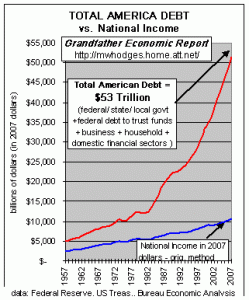The debate seems to intensify on a daily basis regarding the merits and legitimacy of for profit loan modification companies. Officials of HUD, Hope and the banking industry continue their criticisms of the loan modification industry by noting that they offer for free the service that many borrowers are now paying for.
Consider some recent comments from both sides debating the merits of for profit loan modification. Daily Herald
“You don’t need to go out and hire someone to help you,” said Michael Gross, managing director of mortgage servicing for Bank of America. “It is very, at times, frustrating to find a homeowner who has paid a for-profit company $3,000 to $5,000 in an upfront fee, when they could have gotten the same or better assistance free.”
“Nonprofits are not as efficient as the regular market,” said Moose Scheib, head of Michigan-based LoanMod.com, a loan modification firm that charges homeowners $1,500 to help renegotiate their mortgages. “I think the difference is probably more attention you get from us.”
“Once a borrower pays an unscrupulous loss-mitigation consultant and time is wasted, the damage has been done,” said Sarah Bloom Raskin, Maryland’s commissioner of financial regulation. “While we may be able to recover fees, we can never recover the lost time — time that the borrower could have used to work out a bona fide loan modification.”
“We are extremely concerned about the huge proliferation of for-profit companies making a buck on these people,” said Laurie Maggiano, senior policy adviser at HUD’s Office of Housing.
Clayton Sampson, founder of U.S. Housing Assist of Nevada, which launched in July, said nonprofits provide a great service, but added, “We have a lot of clients that need us.”
Sampson said he spent five years at a mortgage brokerage and his contacts have enabled him to customize workout plans for a homeowner’s lender. His firm charges a minimum of $2,500, but he said he would return the money if he was unable to help the homeowner.
Some developments that I foresee in 2009 include the following:
As the number of mortgage delinquencies and foreclosures increase, the loan modification business will receive more scrutiny from state and federal regulators. I would expect that many more states will introduce tough licensing and bonding requirements for any firm engaging in the loan mod business.
Companies involved in the loan mod business may be required by regulatory decree to provide full disclosure to a potential customer that loan mod services are offered for free by various agencies.
If the number of complaints about loan mod companies grows dramatically, strict federal regulations may be passed. For example, it is possible that HUD would require that banks and loan service providers deal only with third parties approved by HUD on any loan modification.
The loan mod companies that remain in business will have to give potential customers a compelling reason to deal with them, especially as consumers become aware of the free loan mod services available.

